Chippendale is not a name normally associated with modernism. But in 1929, the Austrian architect Adolf Loos declared that it would be a ‘superfluous folly’ to design a new dining room chair, because the one ‘from Chippendale’s time was perfect. It was the solution. It cannot be surpassed. Like our fork, like our sabre, like our screwdriver.’ Loos, whose essay ‘Ornament and Crime’ helped shape the anti-decorative ideology of modernist architecture, ordered copies of Chippendale Revival chairs to furnish several of the interiors that he designed. The champion of functional form, Mies van der Rohe, agreed, telling Time magazine in 1957 that Chippendale was famous because a good chair was almost more difficult to design than a skyscraper.
Few brands in the history of furniture have the broad reach of Chippendale, appealing to modernists and traditionalists alike. Three hundred years after Thomas Chippendale was born in Otley, West Yorkshire, his name evokes not simply the furniture he made or the designs he published, but a style and even an era. Despite the vagaries of fashion, his designs have been copied, emulated and collected in successive waves since his death in 1779, filling museum period rooms and domestic interiors from Lisbon to Philadelphia and from Moscow to Mexico City. In Britain, Chippendale has become a national treasure: his imaginary likeness graces the façade of the Victoria and Albert Museum, his work is a staple of the stately home circuit, and he is sometimes described as the Shakespeare of furniture-making. This year, his tercentenary is being celebrated in a series of events across Britain, including a major exhibition at Leeds City Museum (ended 9 June).
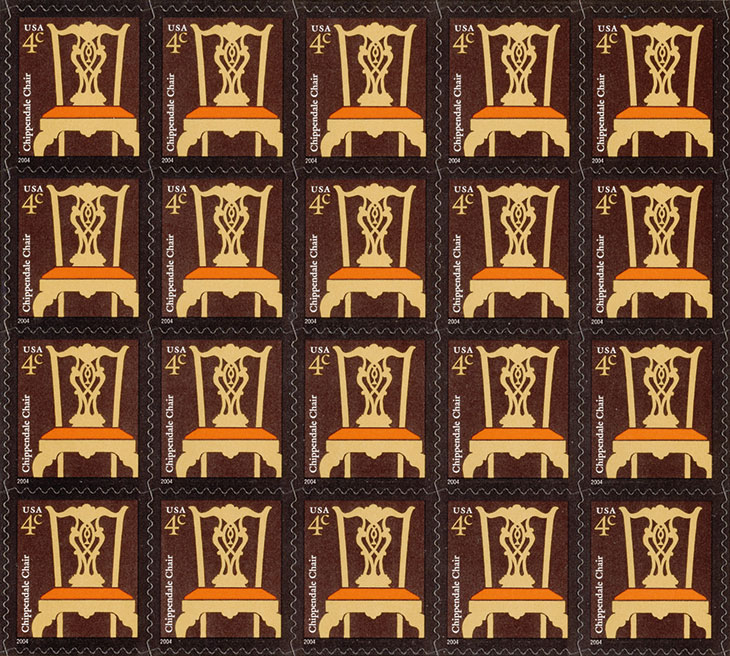
Sheet of Chippendale chair postage stamps, issued by the United States Postal Service in 2004. Courtesy the Chippendale Society/Norman Taylor
Chippendale’s career was initially unremarkable and almost nothing is known of his early years. Born into a family of carpenters and joiners, he was probably apprenticed to a cabinetmaker in Yorkshire before moving to London, where he first appears in the public record at his marriage to Catherine Redshaw in 1748. Chippendale almost certainly started out as a journeyman but by the time he finally settled his growing family in St Martin’s Lane in 1753 he had established himself as a master craftsman, head of a workshop that employed as many as 50 artisans. At this point, he probably no longer worked on the bench himself, concentrating instead on design and management. The key to Chippendale’s enduring success was his genius for self-publicity rather than the furniture he produced. In 1754, he broadcast his designs to the world by publishing The Gentleman and Cabinet-Maker’s Director. In 160 engraved plates, the Director presented a collection of ‘the most Elegant and Useful Designs of Hous[e]hold Furniture’ in an array of styles, from the ‘gothic’ and ‘Chinese’ to the French-inspired ‘modern taste’ (now known as rococo).
Chippendale’s skill in drawing was not in itself unusual; his decision to publish those designs in such an ambitious format was, however, unprecedented. Architects had long promulgated their ideas through books, following Vitruvius and Palladio, but furniture designers and makers had rarely done so. Pamphlets like those by the master carver Matthias Lock were small, limited in focus and aimed at other craftsmen, not buyers. The Gentleman and Cabinet-Maker’s Director was different: it combined the practicality of a pattern book with the elevated tone and production values of an architectural folio, appealing to potential clients as well as fellow cabinetmakers. To emphasise that cabinetmaking was grounded in lofty architectural principals, Chippendale included illustrations of the five orders of classical architecture (cribbed from James Gibbs’s The Rules for Drawing the Several Parts of Architecture) and a demonstration of how to draw furniture in perspective. For the ‘gentleman’ reader, the Director offered an alluring compendium of the latest fashions, overlaid with a veneer of erudition. For the craftsman, Chippendale included instructions, dimensions and details that would help in executing his designs.
The language of ornament used in the Director was not Chippendale’s invention. In the 1730s and ’40s, a new style – now known as the ‘English’ or ‘British rococo’ – had begun to appear in fashionable interiors as well as in pattern books and prints. Silversmiths, engravers, ceramicists, plasterers and garden designers began to embrace the shell-work and scrolls of the French rococo as well as the fantastical pagodas and fretwork of chinoiserie and the ogees, tracery and pinnacles of gothic architecture. Some saw this new eclecticism as whimsy. For others, it was a breath of fresh air. Chippendale quickly absorbed the new taste and became one of its most assured and inventive interpreters. When he moved his house and shop to St Martin’s Lane in 1753, he placed himself at its geographical heart. Just a few steps away were Old Slaughter’s Coffee House and the St Martin’s Lane Academy, meeting places for many of the style’s promoters, including the designer, drawing-master and engraver Hubert Gravelot and the painter William Hogarth.
By the time the Director was published, this new ornamental language had been circulating in pattern books and prints for more than a decade. Nevertheless, Chippendale systematically applied it to an unparalleled array of objects, from extravagant beds and sofas to tea trays and garden railings. Designs ranged from the profusely decorated to the simple, and elements from the ‘modern’, ‘gothic’ and ‘Chinese’ styles were combined as well as appearing separately. This approach yielded enormous variety: the first edition of the Director includes no fewer than 38 chairs, each of which transforms the back splat, stiles, crest rail, seat rail, legs and feet of a chair into a different essay in eclectic design. Chippendale’s distinctive achievement was to unite decorative fertility with utility, comfort and structural solidity in a publication of encyclopaedic ambition. The Director announced his practical as well as his imaginative abilities, showing what his workshop could make in solid wood to answer to the daily needs of a wealthy household.
Chippendale was highly adaptable and sensitive to changing fashions. The third edition of the Director, in 1762, included new designs that favoured classical detailing over vegetal rococo forms. This was Chippendale’s first response to the increasing popularity of the ‘antique’ taste in France and in Britain, where it was championed by the architect Robert Adam. Chippendale would work with Adam at a number of houses, including Newby Hall, Nostell Priory and Harewood House, providing furniture that harmonised with Adam’s light, colourful and repetitive interpretation of classical decoration. Chippendale even worked to Adam’s designs when he made a suite of sofas and armchairs, ‘Richly Carv’d in the Antick manner’, for Sir Lawrence Dundas – the only known instance of Chippendale executing someone else’s design. He quickly integrated the new vocabulary of rosettes, husk flowers, festoons, Greek keys and lyres into useful as well as show-stopping furniture of his own devising. Throughout the 1770s, the elaborate carving of his workshop’s earlier period was increasingly replaced by planar surfaces decorated with gilt bronze mounts or complex coloured marquetry, as on the spectacular ‘Diana and Minerva’ commode at Harewood House.
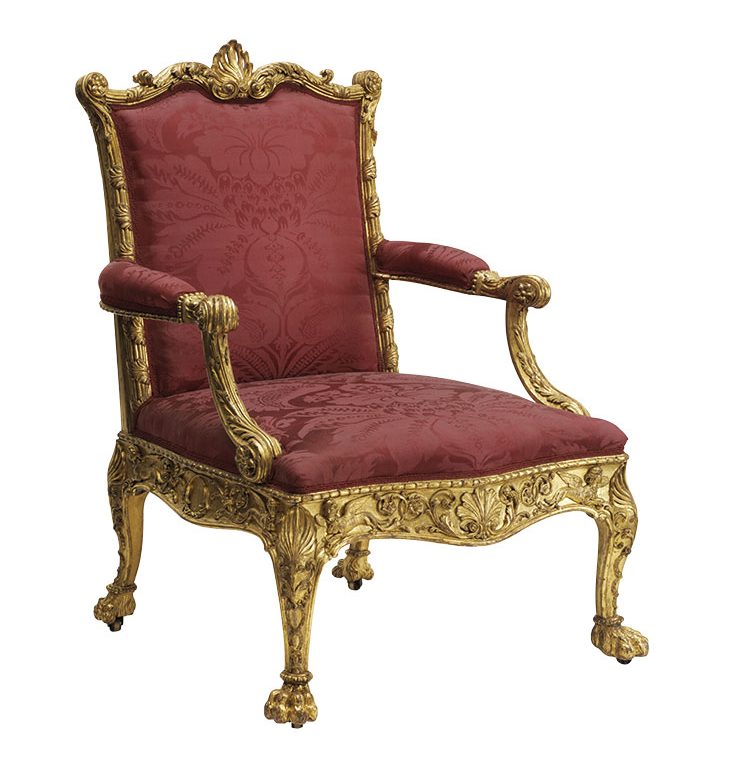
Armchair (1764–65), Thomas Chippendale after a design by Robert Adam. Victoria and Albert Museum, London
Although Chippendale executed some of the finest neoclassical furniture in Europe, he never updated the Director to reflect his practice after 1762. As a result, his name is still synonymous with the style he so successfully publicised: the British rococo. In the 19th and early 20th centuries, many assumed that almost any piece of furniture in this style must be by his hand, especially if it resembled a design in the Director. Yet Chippendale’s attitude to his designs was far from proprietary. In this, he was quite different to Adam: in the face of fierce competition from other architects, Adam and his brother James used their book, The Works in Architecture, to take credit for a ‘revolution in style’. For the Adams, publication was a way of asserting authorship and insinuating that anyone who worked in the same manner was servilely copying their superior forms. By contrast, Chippendale did not portray himself primarily as an innovator, nor as the undisputed owner of his designs. The Director was explicitly intended to be used and adapted by other craftsmen.
Ironically, it was this relaxed attitude to authorship that made the Director so popular and ensured the long afterlife of Chippendale’s name. Each design was a work in progress, to be completed according to the craftsman and client’s preferences. Chippendale’s designs lent themselves to inventive imitation, simplification and combination. He noted that ornament could be removed wherever necessary and often gave several options for decoration on two halves of the same design. Laudably, the Leeds City Museum exhibition includes numerous examples of furniture not made by Chippendale, demonstrating the extraordinary adaptability of his designs in the hands of others. Regional furniture makers in Britain used the Director as the basis for simplified chair designs, which found their way into many more interiors than Chippendale’s costlier versions ever could.
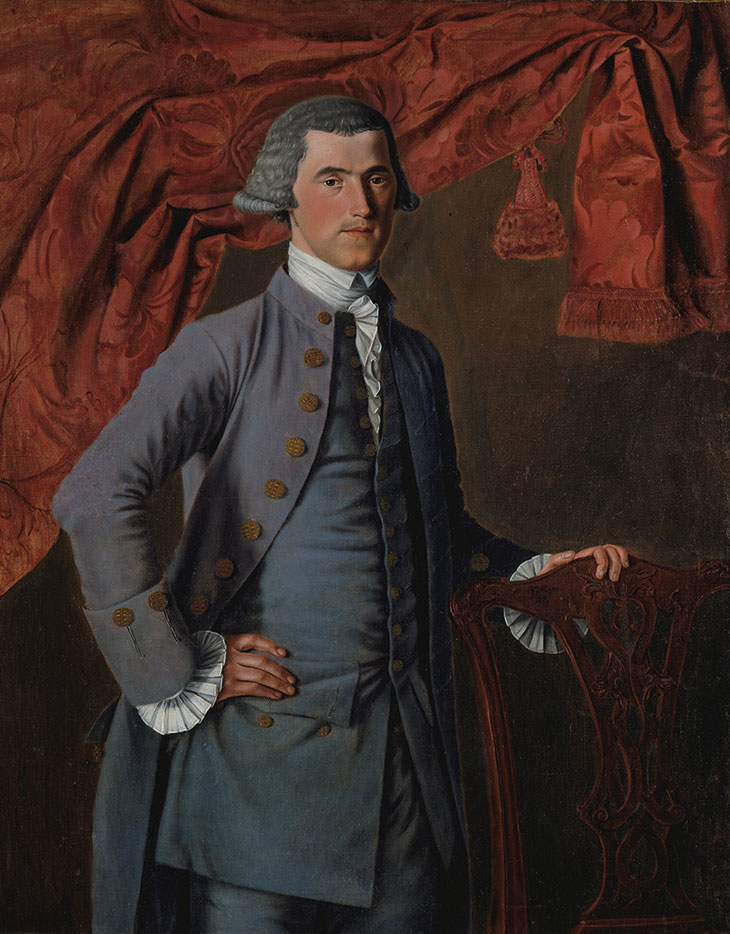
Jeremiah Platt (1767), John Mare. Metropolitan Museum of Art, New York
Through the Director, Chippendale’s designs were exported across the world. Catherine the Great bought a copy, and an edition was issued in French. Within a few decades, hybrid local versions of the Chippendale style appeared in Scandinavia, Portugal, Spain, the Netherlands and North America, produced by London-trained emigrés and by local craftsmen using the Director as a guide. When the New York merchant Jeremiah Platt had his portrait painted in 1767, he posed with his hand resting on a Chippendale-style mahogany chair, suggesting his status as a prosperous and cultured merchant who made his money importing goods from Europe. The Philadelphia, Boston and New York versions of the Chippendale manner would become thoroughly naturalised in America before and after the War of Independence. Later, they would form a crucial ingredient in the nationalist ‘Colonial Revival’ of the 19th century. In 2004, the United States Postal Service issued a stamp celebrating the ‘Chippendale chair’ as an icon of American – rather than British – design.
While the Director was exported globally, Chippendale’s furniture business was reliant on imports, including East Asian lacquer and ‘exotic’ woods like satinwood, rosewood, tulipwood and, of course, mahogany. Grown in Jamaica and Honduras, mahogany was imported to Britain as part of a colonial trade network dominated by two commodities: sugar and human slaves. Because of high tariffs, mahogany had hardly been used in British furniture before 1721, but the Naval Stores Act made colonial timber free to import and it quickly became a cabinetmaker’s staple. The trees cut by slaves in Jamaica were loaded on to ships bound for Britain alongside sugar, cotton and spices. Often, the same ships returned to the West Indies via Africa, bearing more slaves for the plantations.
Wealth derived from the products of enslaved labour in the colonies underpinned the British economy and funded some of the most lavish decorating programmes in the 18th century. Edwin Lascelles, who engaged Chippendale to decorate Harewood House in 1767, had been born in Barbados and owed his fortune to his father’s West Indian plantations and business interests. Lascelles used only the most celebrated designers to create his new house – interiors by Adam, furniture by Chippendale and a landscape by Capability Brown. At Harewood, money that had flowed from colonial trade was used to create luxury goods made of timber from the same colonies. The ‘Diana and Minerva’ commode, for example, is veneered with West Indian satinwood and inlaid with delicate pieces of rosewood and tulipwood, while the roundels depicting the two goddesses are made of ebony and ivory. In total, Chippendale’s furniture at Harewood was worth more than £10,000, rivalling the cost of Brown’s landscape.
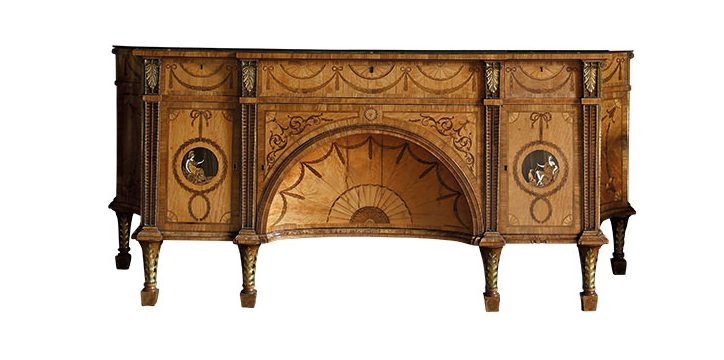
Diana and Minerva commode (1773), Thomas Chippendale. Harewood House, Leeds
Exotic woods and styles transformed pieces of furniture into potent status symbols, indicating the wealth of their owners, the imperial power of the nation and often the close relationship between the two. At Nostell Priory, Chippendale even supplied Sir Rowland Winn with a mahogany house for a monkey, using an imported wood to showcase an imported animal. The same global trading system that brought Chippendale the raw materials for his furniture increased the Director’s international reach – it found its way to Jamaica as early as 1757, where it would influence the local furniture, produced in local mahogany for a British colonial elite, for generations.
At Chippendale’s birthplace in Otley, a blue plaque commemorates him as a ‘world famous cabinet maker’. Chippendale is still a byword for excellence in craftsmanship, whether his workshop was producing the most complex inlaid marquetry for parade furniture or a simple oak chest of drawers for a chambermaid’s bedroom. But this is not the whole story. Chippendale was also a designer, a self-promoter, an organiser and overseer of labour, a negotiator and a social chameleon. For his clients, he needed tact, diplomacy, flattery and patient persistence. Meanwhile, he was managing a huge production operation, monitoring the work of a small army of journeymen, subcontractors and suppliers, including glass-grinders, frame-makers, carvers, gilders, smiths, leather-workers and drapers.
Chippendale’s bills at Nostell Priory provide a snapshot of his diverse capabilities: he supplied everything from a sumptuous gilt barometer case to an elm chopping-block for the kitchen. Many of these objects were sourced from other craftsmen, rather than being made in-house. In 1769, Chippendale was even caught trying to illegally import a set of unfinished chair frames from France, which he presumably intended to sell on. He organised everything from repairs and removals to funerals for his patrons. Despite his apparent success, however, Chippendale’s business was never financially sound. To publish the Director and establish his workshop, he had gone into partnership with the Scottish entrepreneur James Rannie in 1754; this laid Chippendale open to Rannie’s creditors when he died 12 years later. The debt was compounded by the difficulty Chippendale faced in getting his customers to pay enormous bills on time. His business almost collapsed and, although stability was eventually regained with the help of a new partnership, Chippendale’s assets were worth little when he died of tuberculosis in 1779. His son Thomas Chippendale Junior, a talented cabinetmaker and designer in his own right, continued the family enterprise but succumbed to bankruptcy in 1804.
Thanks to the Director, though, Chippendale’s name has gone on to have a life of its own. Perhaps most unexpectedly, in 1979, a troupe of chiselled male dancers began to perform as ‘the Chippendales’, taking their moniker from the style of the chairs in the Los Angeles club where they were established. They capitalised on Chippendale’s fame – and traditional association with quality and stylishness – to build their own international brand. In the more sedate world of furniture, Chippendale has become a generic name for fine craftsmanship and solid but decorative design, from the Chippendale International School of Furniture in Scotland to the Galerías Chippendale, a furniture shop in Mexico City.
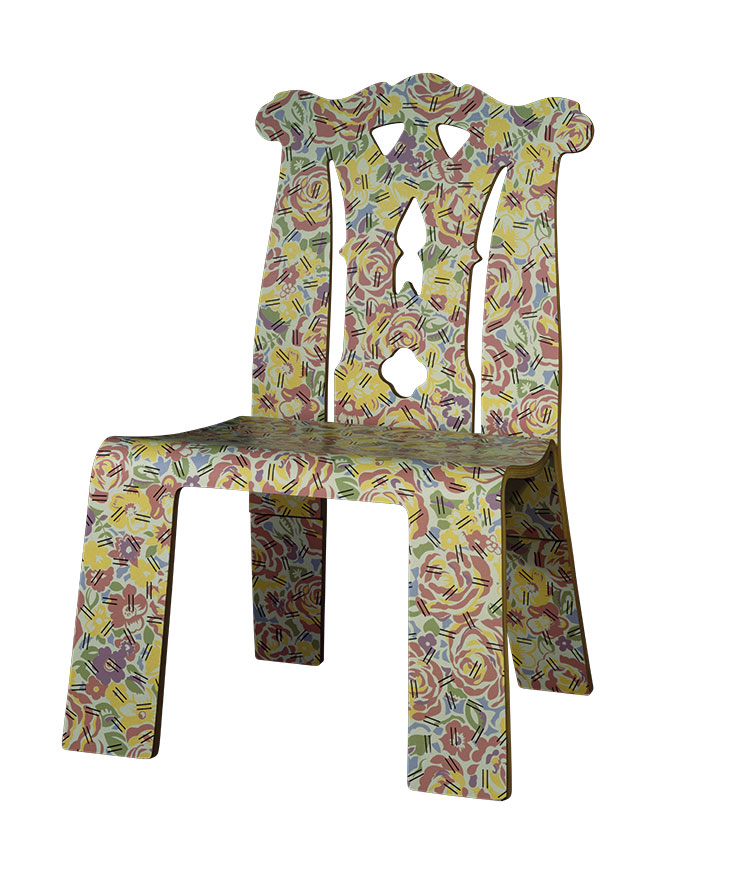
Chippendale chair with Grandmother pattern (1984), Robert Venturi and Denise Scott Brown, manufactured by Knoll International, New York. Victoria and Albert Museum, London
Chippendale-style chairs may not be quite as ubiquitous as the forks and screwdrivers to which Loos compared them, yet their marriage of form and function has ensured their enduring appeal. As the postmodern architects Robert Venturi and Denise Scott Brown showed in their witty pastiche, the Chippendale chair is instantly recognisable, even pared back to its barest essentials: a pierced back splat and curved crest rail with elongated ‘ears’ either side. But while Venturi and Scott Brown’s chair remains a museum piece, chairs in the Chippendale style are still in practical use around the world. Documented works by Chippendale are few and far between. Nevertheless, every piece of furniture that has been made in his name – whether a copy, an adaptation, a revival, or a pastiche – tells part of Chippendale’s surprisingly international story, and testifies to his enduring global significance.
From the June 2018 issue of Apollo. Preview and subscribe here.
Unlimited access from just $16 every 3 months
Subscribe to get unlimited and exclusive access to the top art stories, interviews and exhibition reviews.

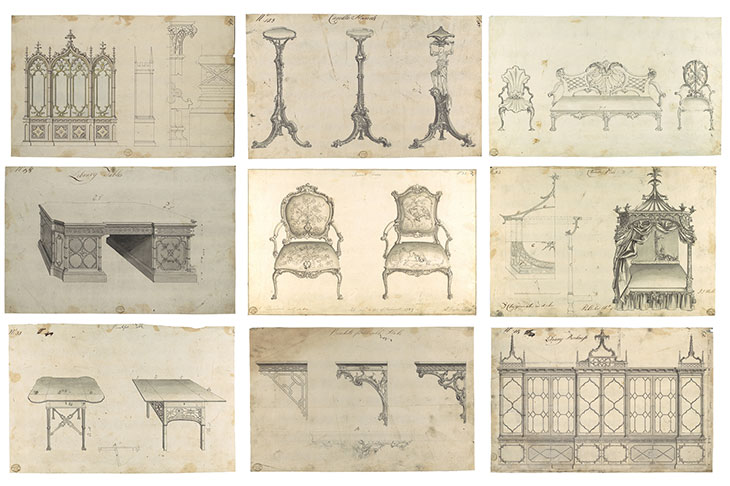
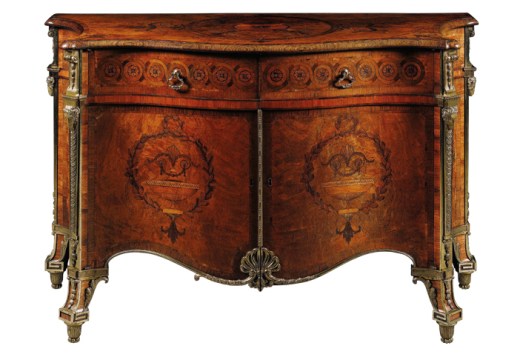
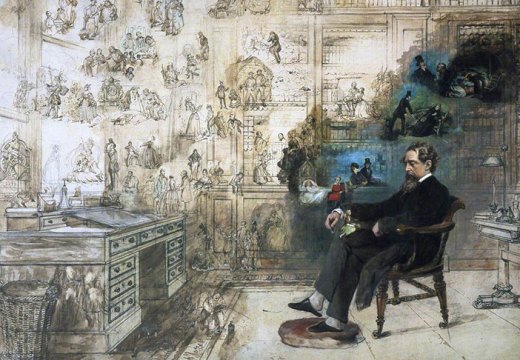
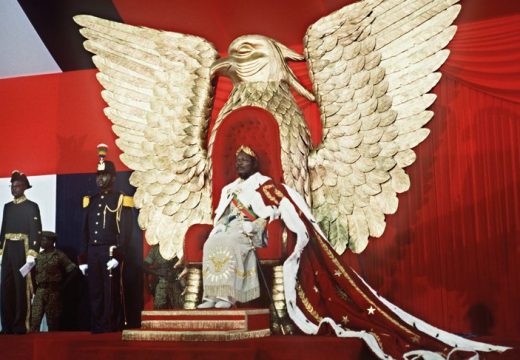









![Masterpiece [Re]discovery 2022. Photo: Ben Fisher Photography, courtesy of Masterpiece London](http://www.apollo-magazine.com/wp-content/uploads/2022/07/MPL2022_4263.jpg)
Has the Fitzwilliam lost the hang of things?